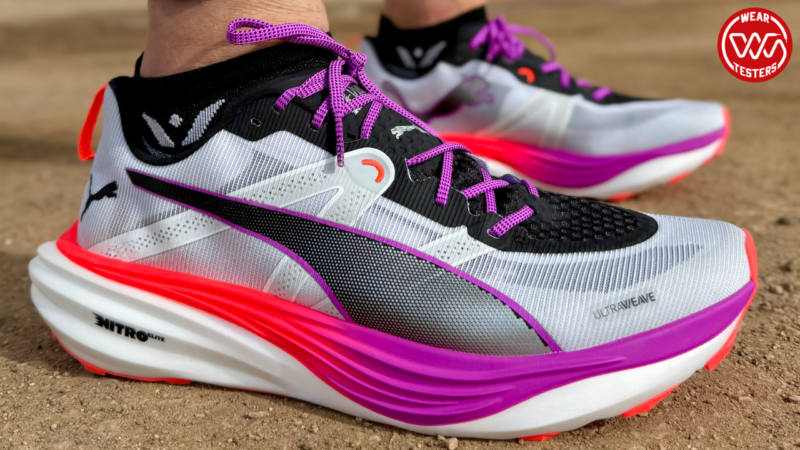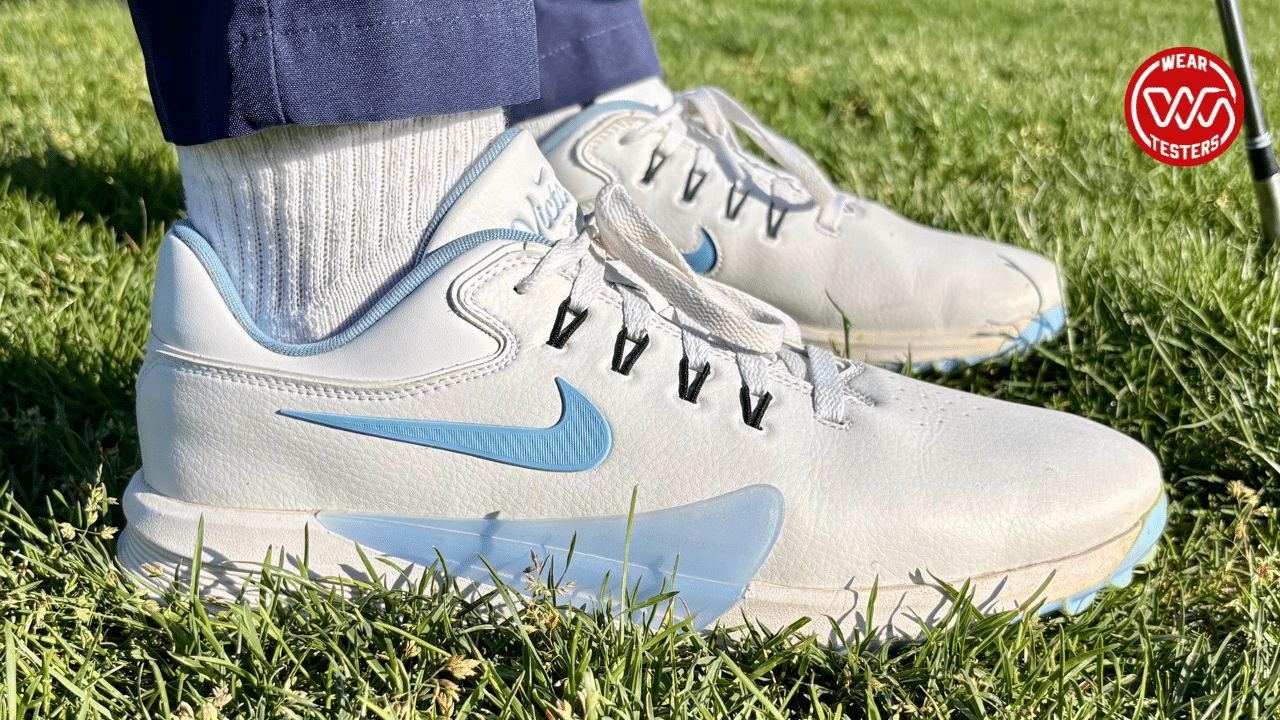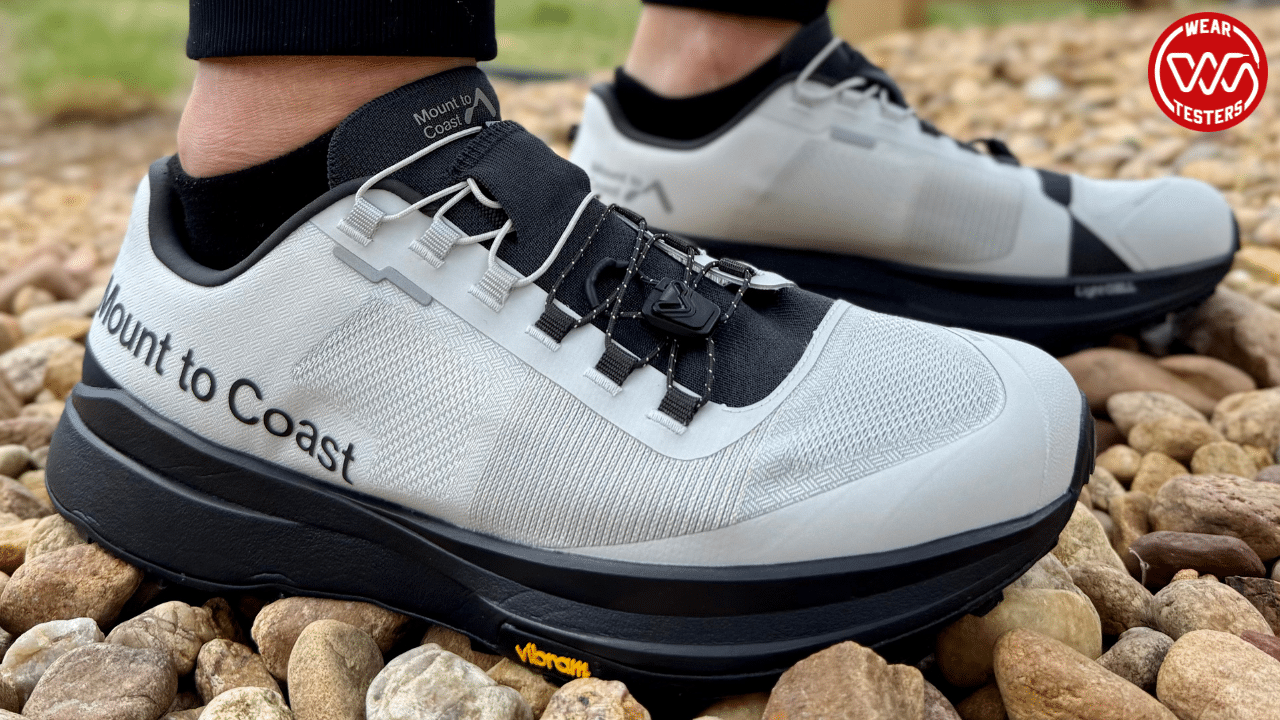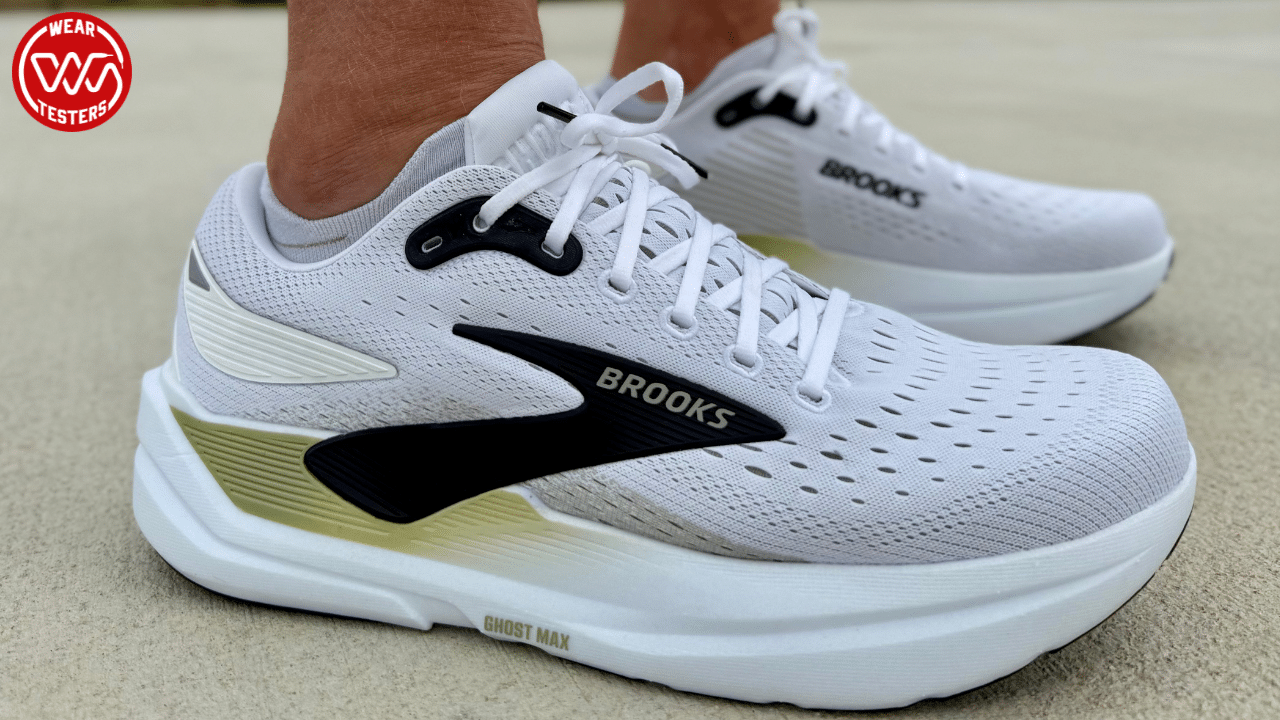“Puma is making a plated trail shoe?” That was my reaction when I first saw the Puma Deviate NITRO Elite Trail at TRE back in November. I am admittedly unfamiliar with Puma’s shoe game, with a limited knowledge of their road/track performance mostly thanks to athletes like Usain Bolt (duh) and Molly Seidel (also duh). The shape of the Puma Deviate NITRO Elite Trail to me resembles road geometry and feels super lightweight. There seemed to be a lot of hype around the shoe, with Puma’s product team raving about the performance.
I viewed everything with a skeptic’s eye, as Puma is relatively new to the trail scene, and it often takes companies a few tries to nail what is a very tricky formula. Especially considering this shoe was presented as a super shoe, I expected an end product that was fast and agile but missing lots of components to make it a bomber on trail.
My skepticism carried over to the first few runs in the Puma Deviate NITRO Elite Trail. But, slowly and surely, the Puma DNA bled through, and I started to experience cat-like symptoms on the trail: agility, speed, and a graceful gait [Editor’s Note: So you’re a cat now? This feels like a graphic novel origin story in the making…].
Puma Deviate NITRO Elite Trail
Release Date: March 2025
Price: $230
Men’s Weight: 9.5 oz. / 269 g
Women’s Weight: 8.0 oz. / 227 g
Drop: 6mm (36mm heel, 30mm forefoot)
Sizing: True-to-size
- Rundown: The Puma Deviate NITRO Elite Trail is a speedy and confidence-inspiring trail super shoe. While I believe the shoe pulls inspiration from Puma’s vast experience on the road, this trail shoe holds its own for a brand who has seemingly only dipped a toe in the proverbial trail pond.
Pros
- Light and responsive NITROFOAM ELITE midsole
- Comfortable and pliable upper
- Smooth road/gravel transitions
Cons
- Not ideal for climbing (running big hills)
- Outsole lugs don’t bite the ground well
- Annoyingly long shoe name
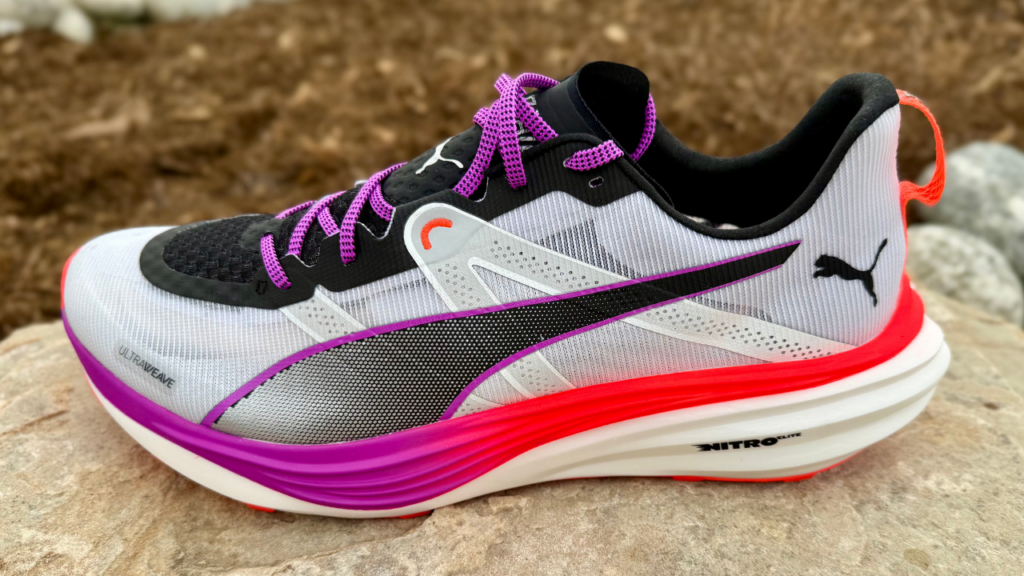
What is the Puma Deviate NITRO Elite Trail?
The Puma Deviate NITRO Elite Trail is a lightweight, plated trail racer. It’s a medium stack height shoe meant for ultra distances on fast and speedy terrain, providing smooth turnover and great energy return. This shoe feels closer to a road shoe with a trail outsole than it does a trail shoe, yet it somehow comes together for a pretty comfortable ride.

Cushion/Midsole/Support
Kicking it off with the midsole, the Puma Deviate NITRO Elite Trail comes with a 30mm forefoot and 36mm heel of NITROFOAM ELITE, a super light and bouncy compound that, after a few runs to break in, will have you feeling springboarded along the trail. The slightly rockered shape and forward geometry of the shoe lets this midsole shine as, like any feline, it wants to gracefully float over miles and miles of trail. [Editor’s Note: So we’re sticking with the cat theme, I see. Works for me.] I really enjoyed the longer days on the trail, where the Puma Deviate NITRO Elite Trail allowed me to go at varying paces with comfort and/or speed as needed.
Naturally, this midsole performs best when you’re throwing more energy forward. But it was also nice when I wanted to tune back the pace and just cruise. Plenty of cushion lies between your foot and the ground, making this shoe a great option for fast ultras. I’m not aware of any big trail athletes currently signed to Puma, but man, I’d love to see this shoe laced up on start lines like Canyons 100K or Western States. It runs really well and energizes your stride all the way through.
Nestled down in the midsole is Puma’s PWRPLATE, which provides the extra propulsion needed on race day. I found myself not noticing the plate very much but still feeling the benefits of it, which is the perfect combo. This midsole is soft, and that can at times be an issue with plated shoes, but I didn’t find it to be so with the Puma Deviate NITRO Elite Trail.
The plate provides some extra stability, along with the wider last of the forefoot and additional midsole extension back towards the heel. It’s a really comfortable ride, and I didn’t ever feel like I was getting out over the shoe like I have in other plated trail options. I like the foot shape and appreciate the ample room up front, which generally allows me to feel more balanced and centered. I wouldn’t take a shoe like this on too technical of terrain, but it’s pretty supportive on medium-to-light trails.
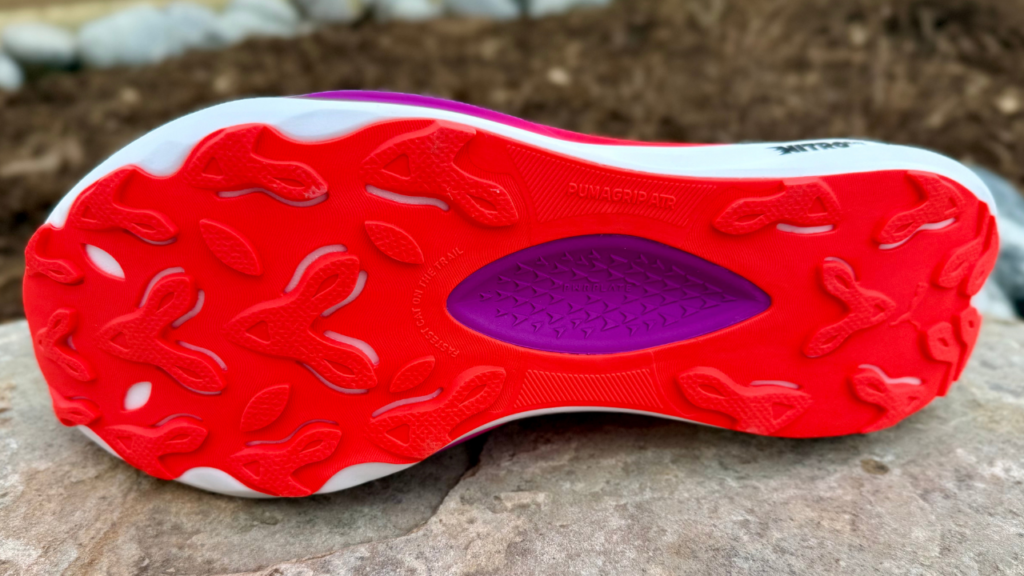
Traction
On the bottom, we’ve got a PUMAGRIP ATR outsole with some star-like lug patterns that are about 3mm deep. This outsole was both good and bad for me depending on what I needed on a given day. I have no complaints about the stickiness of the PUMAGRIP rubber…
However, the lug pattern shape and depth just don’t really cut it on steep and loose terrain. I’ve seen a few different shoes recently that go for unique or different lug shapes, and I’ll say that most of them end up letting me down. Naturally, a v-shape or any pattern with sharp edges tends to grip well because of, well, physics. The flower-petal-like shape of the PUMAGRIP ATR doesn’t bite very well, and you can definitely slip out on steeper or looser terrain.
On the other hand, the minimal outsole pattern lends itself well to a smoother running experience when the terrain is mellow. You feel less clunky and have a smooth toe-off. I have been sticking to lighter terrain with the Puma Deviate NITRO Elite Trail, and it’s feeling consistently great.
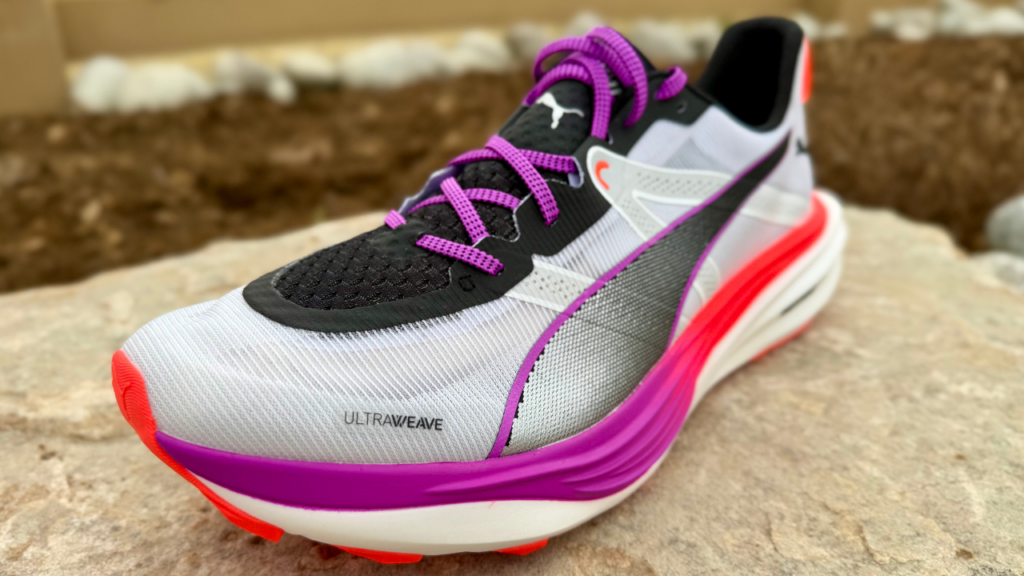
Upper
The Puma Deviate NITRO Elite Trail uses a Puma compound called ULTRAWEAVE that is similar to Matryx. I’ve been loving this upper. It’s nice and light but provides a secure fit that molds nicely to your foot. Puma PWRTAPE reinforces the sides of the upper to help provide some extra form and keep your foot over the midsole.
Puma didn’t skirt comfort on the heel cup either, providing plenty of padding and security. The tongue is semi-gusseted and made of a soft, suede-like material that provides plenty of padding with the laces. I would prefer a longer tongue, however, as this one is on the short end and can slip down slightly while running, leading to some lace bite if you have it really cinched down.
But overall, the Puma Deviate NITRO Elite Trail’s upper fit my foot really well. There’s enough room, but not too much, and a soft but formidable upper ensures a secure ride.
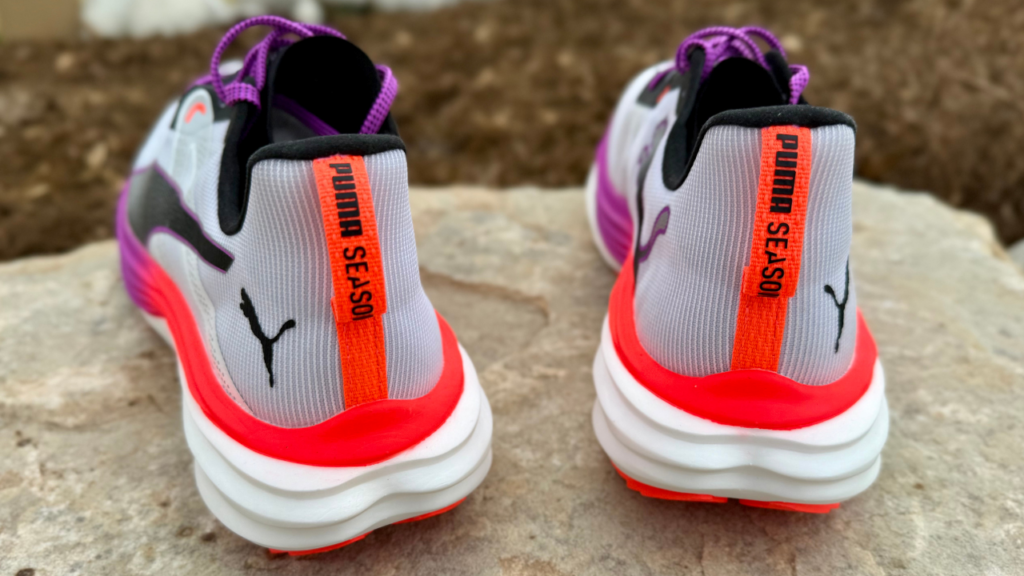
Is the Puma Deviate NITRO Elite Trail wide foot friendly?
If you’ve got a wide forefoot, it should work for you. If you’re wider in the midfoot, it might be a little snug. If you’re on the fence, buy from somewhere with a good return policy just in case your foot is too beefy.
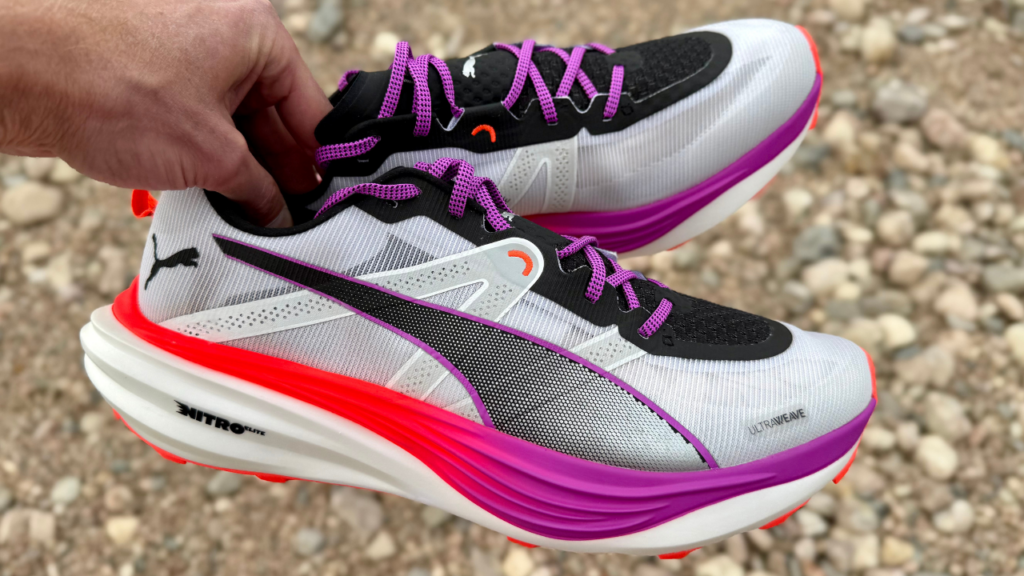
Is the Puma Deviate NITRO Elite Trail worth $230?
Yes! Compared to other super shoes, the Puma Deviate NITRO Elite Trail performs at the top end yet is priced towards the low-to-mid end. That means there is some inherent extra value built in when you buy it – always a nice touch.
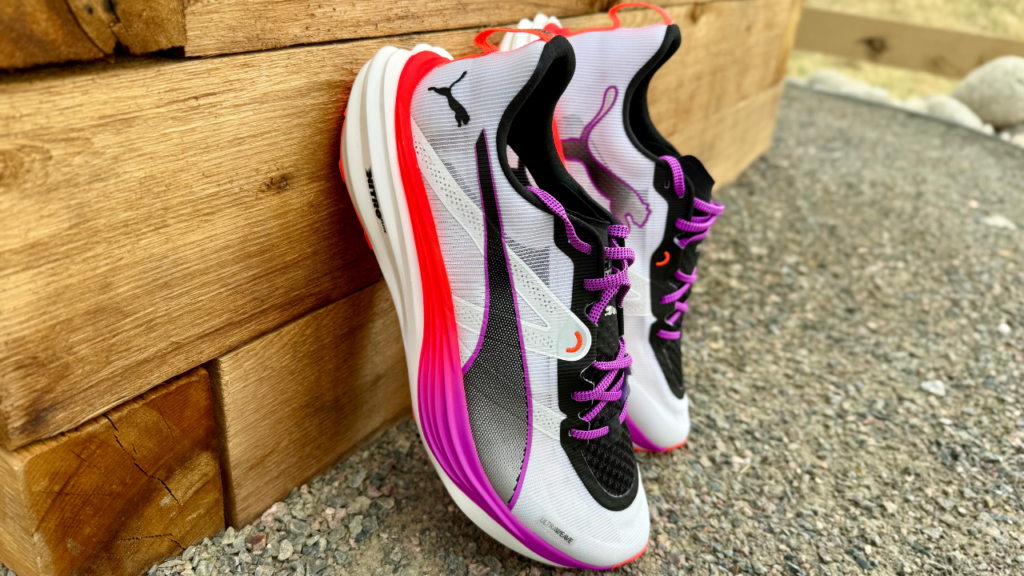
How to use the Puma Deviate NITRO Elite Trail
Use the Puma Deviate NITRO Elite Trail whenever you know you’re headed out on runnable and cruiser terrain and you want to up the pace. This is a great shoe for high turnover and high cadence. When you let yourself open up your stride, the Puma Deviate NITRO Elite Trail will have you feeling like a feline with a light and quick step. [Editor’s Note: And the feline transformation is complete…]
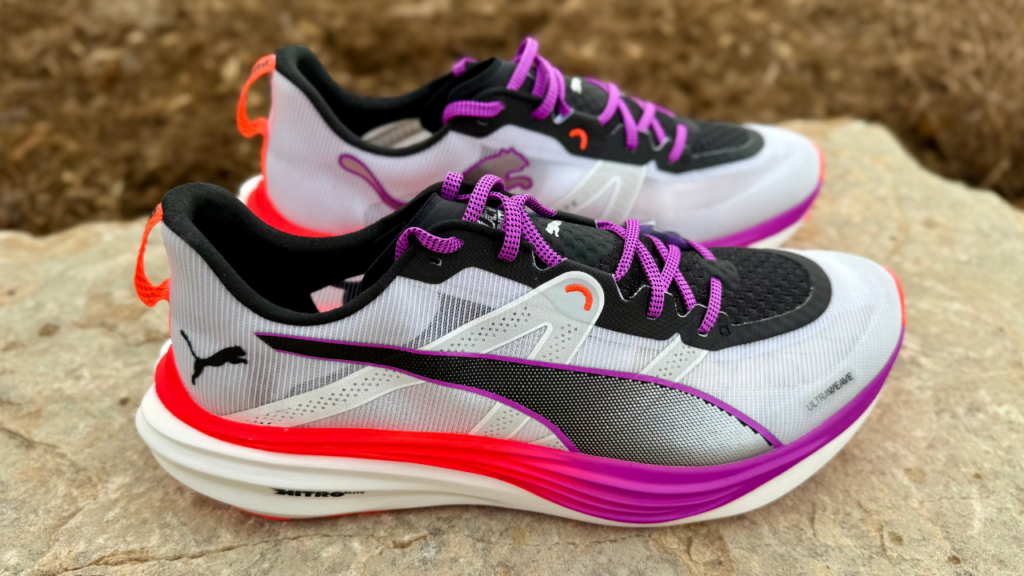
Puma Deviate NITRO Elite Trail Summary
I am humbly here to say that I judged this shoe by its cover and was happy to be wrong. Puma put a lot of thought and effort into producing the Deviate NITRO Elite Trail, and it paid off. This is a solid shoe from top to bottom and one where it’s hard to find things you really dislike.
As stated, it’s meant for light trails and fast paces. Judging with that frame in mind, there aren’t many trail options that perform as well as this shoe. It’s really fun, light, peppy, and playful. This geometry makes you feel like you’re cooking around a track, and it really lends itself to good ‘ole, traditional running (saying this as a trail person, where ‘running’ can be a loose term). Kudos to Puma for putting out a banger and cementing its spot in the trail space!
How does the Author Run?
Sam Lohse (age 28, 6’0″, 170 lbs): Runs daily, sometimes morning/night doubles, with one rest day a week (typically). Hangs right around 40-50 miles a week in general unless in race-specific training. Races distances from 50K to 100 miles, almost always on the trails.
Disclosure
While Puma did provide pairs of the Puma Deviate NITRO Elite Trail to facilitate this review, the company had no involvement in this review, didn’t receive an advance look at it, and has not attempted to influence it.

